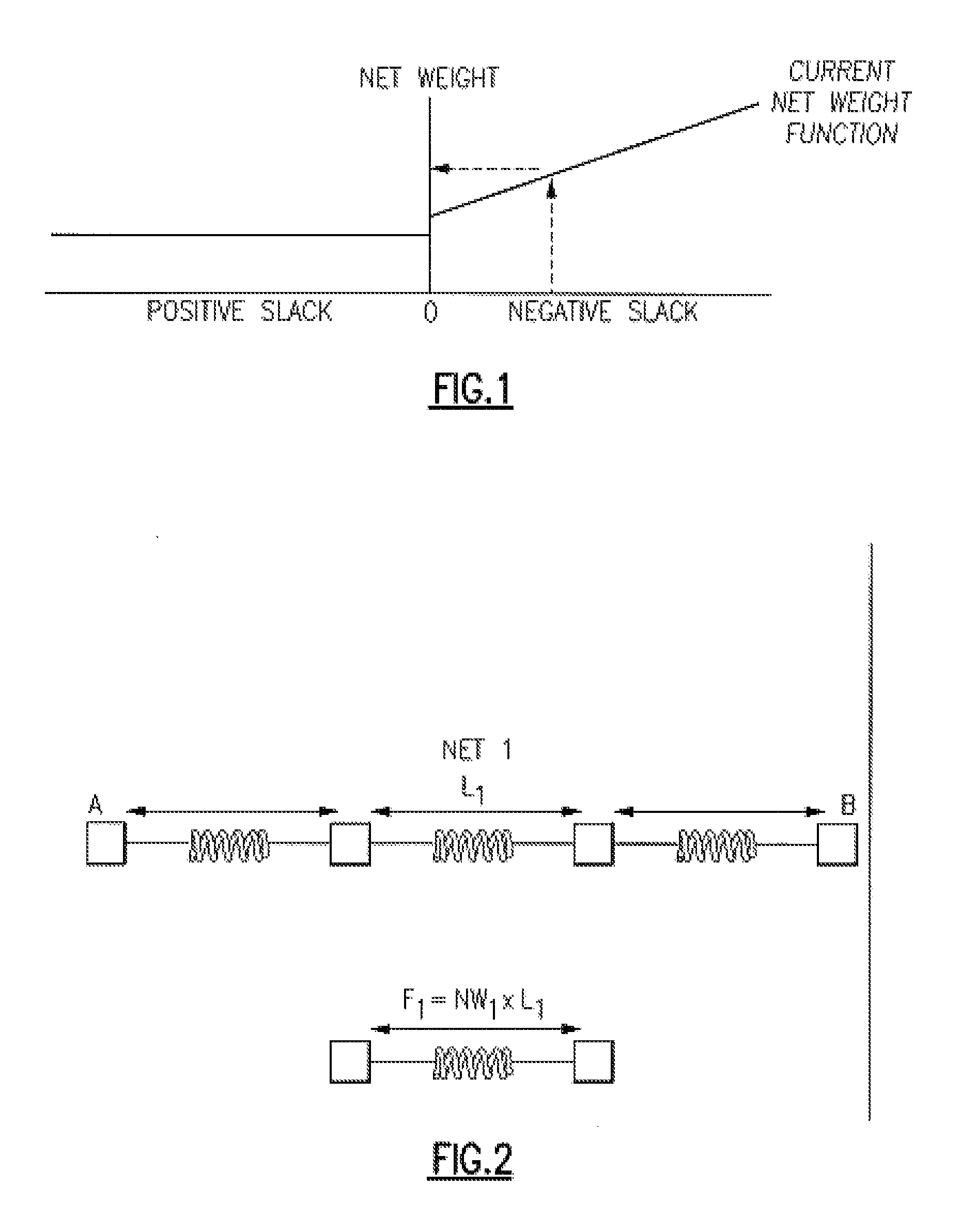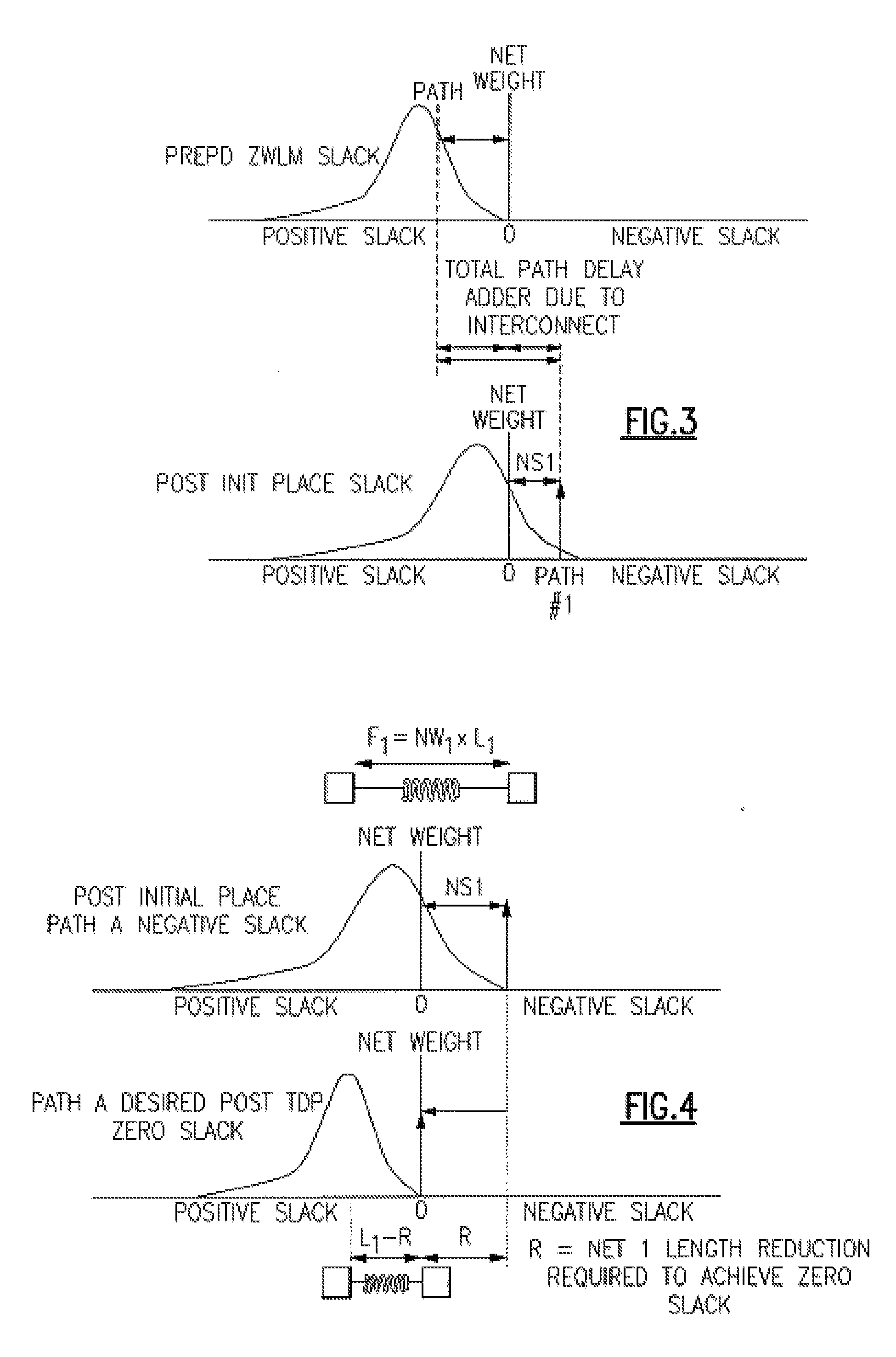Integrated Circuit Implementing Improved Timing Driven Placements of Elements of a Circuit
- Summary
- Abstract
- Description
- Claims
- Application Information
AI Technical Summary
Benefits of technology
Problems solved by technology
Method used
Image
Examples
example
[0037] If two paths A & B each have negative slack values of minus 500 ps, then in the current method, both paths (A & B) will receive the same net weight value.
[0038] But suppose that path A had a pre-placement ZWLM slack of +50 ps (FIG. 8), and path2 had a pre-placement ZWLM slack of +5000 ps (FIG. 9).
[0039] In order for path A and path B to close timing they must both recover 500 ps worth of net delay.
[0040] In path A's case, this recovery amounts to 90% of the path's total net delay adder (500 / 550=0.9)
[0041] In path B's case, this recovery amounts to only 9% of the path's total net delay adder (500 / 5500=0.09)
[0042] Current Method:
[0043] Implementing equivalent net weights for the nets in paths A & B implies that these nets will have identical placement priorities in the subsequent placement. Nets in path A—which must (on average) recover 90% of their length, would be treated (prioritized) the same as nets in path B—which must recover (on average) only 10% of their length. ...
PUM
 Login to View More
Login to View More Abstract
Description
Claims
Application Information
 Login to View More
Login to View More - R&D
- Intellectual Property
- Life Sciences
- Materials
- Tech Scout
- Unparalleled Data Quality
- Higher Quality Content
- 60% Fewer Hallucinations
Browse by: Latest US Patents, China's latest patents, Technical Efficacy Thesaurus, Application Domain, Technology Topic, Popular Technical Reports.
© 2025 PatSnap. All rights reserved.Legal|Privacy policy|Modern Slavery Act Transparency Statement|Sitemap|About US| Contact US: help@patsnap.com



